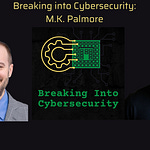Harnessing the Identify and Protect Stages of NIST CSF for Enhanced Threat Protection
Explore how identity management is pivotal in the Identify and Protect stages of the NIST Cybersecurity Framework (CSF), offering robust defenses against evolving cyber threats.
In today's digital-first environment, managing internal identities efficiently and securely is paramount for organizations across all industries. Identity management encompasses the methodologies and systems that allow businesses to authenticate and authorize individuals or groups to access resources within corporate environments. However, this process comes with complex challenges that can impact security, compliance, and operational efficiency. Understanding these challenges and employing strategic improvements is crucial for maintaining robust security protocols and safeguarding sensitive information. This introduction delves into organizations' everyday challenges in managing internal identities and provides practical tips for enhancing these processes. Additionally, it highlights the critical role of collaboration among various business units, such as Human Resources, IT, Compliance, and departmental management, in fostering a secure and compliant identity management framework.
Introduction to Identity Management and the NIST Cybersecurity Framework
Identity management is critical to any organization’s cybersecurity strategy, particularly within the Identify and Protect stages of the National Institute of Standards and Technology’s Cybersecurity Framework (NIST CSF). This framework provides guidelines on preventing, detecting, and responding to cyber threats, with identity management as a cornerstone for safeguarding digital assets. It involves processes and technologies that help manage and secure identity information to ensure the right individuals access the appropriate resources at the right times for the right reasons.
The Value and Impact of Identity Management Tasks
Effective identity management encompasses various tasks, each contributing uniquely to the organization's security posture. Key tasks include creating and managing user credentials, implementing multi-factor authentication (MFA), and continuously monitoring and updating access controls. These measures help reduce the risk of unauthorized access and potential breaches. For example, MFA adds layer of security that significantly mitigates the risk of compromised passwords.
Challenges and Solutions in the Current Environment
Today’s businesses face numerous challenges in identity management, including managing access across varied IT environments and the growing sophistication of cyber threats. Organizations are increasingly turning to cloud-based identity and access management solutions that offer scalability, real-time access updates, and integrated security features to address these issues. Additionally, adopting artificial intelligence and machine learning for behavioral analysis can predict and prevent unauthorized access based on usage patterns.
Looking Forward: Innovations and Strategies in Identity Management
Looking ahead, the future of identity management is geared towards more integrated and predictive systems. Innovations such as blockchain for secure, decentralized management of digital identities and biometric authentication methods are on the rise. These technologies not only enhance security but also improve user experience by streamlining authentication processes.
Actionable Summary
To fully leverage identity management within the Identify and Protect stages of the NIST CSF, organizations should:
Evaluate and update their identity management policies regularly.
Invest in training for IT staff and users to recognize phishing attempts and other common cyber threats.
Consider adopting emerging technologies like blockchain and advanced biometrics to stay ahead of potential security threats.
For further learning and detailed understanding, professionals are encouraged to consult resources such as NIST’s official guidelines on identity management and participate in cybersecurity forums and webinars.
Challenges of Internal Identity Management
The complexity of Managing Diverse User Roles: Organizations often struggle with the complexity involved in managing diverse user roles and access rights. As companies grow and roles change, keeping track of who has access to what becomes increasingly challenging.
Integration Across Multiple Platforms: Many businesses use various applications and platforms, each with its own identity management controls. Integrating these systems without creating security gaps or user friction is a significant challenge.
Compliance and Regulatory Requirements: Adhering to regulatory requirements for data access and protection, such as GDPR or HIPAA, adds another layer of complexity to identity management. Compliance requires meticulous control and auditing of access rights.
Insider Threats: Managing the risk posed by insider threats is a continuous challenge. Employees with excessive access rights can accidentally or maliciously expose sensitive data.
Tips for Improving Internal Identity Management Processes
Regular Audits and Reviews: Regularly audit access rights and user activities. This helps ensure that only the appropriate personnel can access sensitive systems and that any anomalous behavior is quickly detected.
Role-based Access Control (RBAC): Implement role-based access control to minimize access privileges. Users should only have access rights essential to their job functions, reducing the risk of insider threats and data breaches.
Unified Identity Management Solutions: Use a unified identity management system that integrates all user management across various platforms. This improves security and enhances user experience by providing single sign-on (SSO) capabilities.
Multi-factor Authentication (MFA): Enhance security by implementing multi-factor authentication across all systems. MFA adds an extra layer of protection, making it more difficult for unauthorized users to gain access even if they have compromised credentials.
Involvement of Other Business Units
Human Resources: HR plays a crucial role in identity management by initiating the user identity setup and termination processes. They ensure the right access is granted when employees join, move within, or leave the company.
IT and Security Teams: These teams implement and maintain the identity management infrastructure. They handle the technical aspects of access controls, audits, compliance, and integrating security measures like MFA.
Compliance and Legal Departments: These units ensure identity management processes comply with relevant laws and regulations. They also help address legal implications related to data breaches or non-compliance.
Departmental Managers: Managers within specific departments must communicate role or employment status changes to HR and IT. They are also responsible for reviewing and approving access requests for their team members, ensuring appropriate access levels.
By addressing these challenges and leveraging cross-departmental collaboration, organizations can enhance their identity management practices, strengthening their security posture and compliance with regulatory standards.
Actionable and Results-Focused Summary
Efficient and secure management of internal identities is essential in today's digital-first environment, where safeguarding sensitive information and maintaining robust security protocols are paramount. Identity management is vital in authenticating and authorizing individuals within an organization, directly impacting security, compliance, and operational efficiency. Organizations can effectively enhance their security measures by understanding and addressing the complexities involved in managing diverse user roles and integrating multiple platforms.
To improve internal identity management processes, organizations should focus on several key actions:
Implement Regular Audits and Reviews: Regular checks on access rights and user activities help maintain security integrity and quickly identify anomalies.
Adopt Role-based Access Control (RBAC): RBAC minimizes access privileges to align with job functions, significantly reducing insider threat risks and potential data breaches.
Utilize Unified Identity Management Solutions: Integrating all user management systems under a single framework enhances security and user experience through single sign-on (SSO) features.
Deploy Multi-factor Authentication (MFA): Strengthening login protocols with MFA ensures an additional layer of security, protecting against unauthorized access even if credentials are compromised.
Furthermore, collaboration among various business units—such as Human Resources, IT, Compliance, and Departmental Management—is critical in fostering a secure and compliant identity management framework. HR's role in managing the lifecycle of employee access IT's responsibility for maintaining the identity management infrastructure and Compliance's oversight of regulatory adherence form a comprehensive approach to internal identity management.
By effectively addressing these areas, organizations can improve their identity management processes and enhance their overall security posture, ensuring that they remain resilient against emerging cyber threats. This strategic approach to identity management supports the broader goal of safeguarding digital assets while maintaining compliance and operational efficiency.












